One: Overview
Surfacing welding is a kind of technology method that the material with absolute performance is deposited on the surface of the welding piece by the welding method. The purpose of this method is not to connect the weldment, but to obtain the deposited metal layer with unique properties such as wear-resistance, heat-resistance and corrosion-resistance on the surface of the weldment, or to restore or increase the size of the weldment. The surfacing is widely used in manufacture and repair.

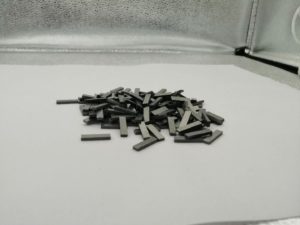

Two, surfacing metal
Generally speaking, the surfacing metal should first meet the conditions of use of the welding parts; secondly, consider the surfacing metal weldability is better, and then appropriately choose more economical surfacing metal.
Common surfacing metals used under working conditions are: high-stress intermetallic wear using hypoeutectic cobalt-based AlloyAlloy, cobalt-based AlloyAlloy containing intermetallic compounds; Most cobalt-based alloys or nickel-based alloys are selected for intermetallic wear + corrosion or oxidation, high AlloyAlloy cast iron for low-stress Abrasive wear, impact erosion, and abrasive erosion, carbide for high-stress abrasive wear and cutting edge Co-based AlloyAlloy was selected for cavitation erosion, high-alloy manganese steel for severe impact, hypoeutectic co-base AlloyAlloy for severe impact + corrosion + oxidation, hypoeutectic co-base AlloyAlloy for intermetallic wear and co-base AlloyAlloy with intermetallic compound at high-temperature AUSTENITIC manganese steel is used for chisel-type abrasive wear, and the cobalt-based carbide-type cobalt-based AlloyAlloy is used for high temperature creep strength at 540 °C.



Iron-based hardfacing metal has many products, a wide range of properties, proper matching of toughness, and wear resistance, and the most significant advantage is a low cost, so it is widely used. There are four broad categories:
One is pearlitic steel surfacing metal, this type of alloy weldability, impact resistance, low hardness, mainly used to repair mechanical parts like shaft.
The other is the AUSTENITIC steel hardfacing metal. The austenitic manganese steel hardfacing metal has the characteristics of high impact toughness and work hardening, but it is easy to produce hot cracks, generally used to repair the severe impact load between the metal wear and abrasive wear parts, such as mining trucks, railway turnout, etc. The austenitic chromium-manganese hardfacing metal has better weldability than austenitic manganese steel and has better corrosion resistance, heat resistance, and thermal crack resistance.
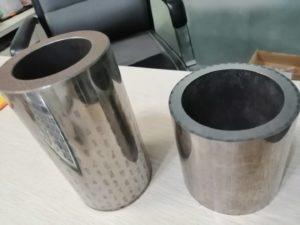

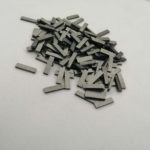
The third is the MARTENSITIC steel hardfacing metal, the structure of which is mainly martensite. The hardfacing layer has high hardness and yield strength, high wear resistance, and can be subjected to medium impact, but the impact resistance is worse than that of pearlitic steel and AUSTENITIC steel. They are mainly used to repair worn parts between the metal, such as gears, traction chassis, etc.
The fourth is alloy cast iron hardfacing metal, this kind of hardfacing layer has very high abrasion resistance, heat resistance, corrosion resistance, excellent oxidation resistance, and resistance to light impact. Still, it is easy to crack when surfacing, and special care is taken when welding, mainly used for surfacing agricultural welding machinery, mining equipment, and other parts.


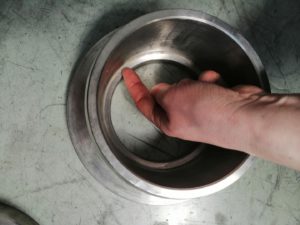
Nickel-based hardfacing metals, the most widely used of which are nickel-chromium-boron-silicon series alloys, which have excellent properties of resistance to low-stress Abrasive wear and resistance to wear between metals, corrosion resistance, heat resistance, and high-temperature oxidation resistance, but the strength to high-stress Abrasive wear and impact resistance is less, usually used in corrosive media or high-temperature environment by low-stress Abrasive wear occasions.
Ni-based alloys containing intermetallic compounds, such as Ni-32mo-15cr-3si, have a high hardness at high temperature, excellent resistance to intermetallic wear, and medium abrasive wear, but weak impact resistance. This AlloyAlloy is suitable for tungsten gas shielded ARC SURFACING OR PLASMA ARC surfacing. It is commonly used for surfacing of valves working in highly corrosive media.
Nickel-based alloys containing carbides are much cheaper than cobalt-based alloys, and from an economic point of view, they are widely used as substitutes for cobalt-based surfacing metals.
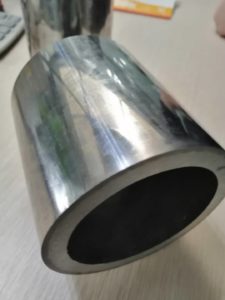


Cobalt-based hardfacing metal, mainly refers to cobalt-chromium-tungsten AlloyAlloy, which can maintain high strength and hardness at about 650 °C, has specific corrosion resistance and excellent adhesive wear resistance, and cobalt-based AlloyAlloy has the best comprehensive properties among hardfacing metals, commonly used for surfacing welding of parts in high temperature working state.
Copper-based hardfacing metal, usually bronze, brass, cupronickel, pure copper, copper-based hardfacing alloy corrosion resistance, corrosion resistance and wear resistance between the metal is good, can be hardfacing iron-based materials made into bimetal parts, it can also be used to repair worn parts; however, the copper-based hardfacing metal has weak resistance to sulfide corrosion, abrasive wear and high temperature creep, low hardness and is not easy to weld and is only suitable for applications below 200 °C, this kind of build-up welding metal is mainly used for the build-up welding of bearing Bush, low-pressure valve sealing surface, etc…


Carbide surfacing welding metal, mainly used for severely worn working conditions, such as oil well drill, road construction machinery parts surfacing welding.
Third, the surfacing welding process method
Oxygen-acetylene surfacing
It is mainly used for surfacing welding of parts with a smooth surface and high-quality requirement, primarily for small and medium-size welding parts. Such as valves, drill bits,
overlaying welding of the plowshare, and other components.
Oxygen-acetylene welding equipment is easy to operate and cost-effective and can be used in general with gas welding equipment, except that the nozzle aperture of welding torch is more significant than that of gas welding, thin and smooth surfacing layer can be obtained on a tiny area, the dilution rate is low, the depth of the melted layer can be controlled within 0.1 mm, and the quality of the surfacing layer can be guaranteed The carburization of reducing flame efficiently can reduce the toughness of the surfacing layer, but it can improve the wear resistance of the surfacing layer with carbide as the main wear-resisting phase, there are specific technical requirements for welders.



Oxygen-acetylene surfacing generally uses carbonization flame surfacing, the flame properties are related to the type of surfacing metal: nickel-based alloys usually use a neutral flame, but in order to improve metal mobility, occasionally using carbonization flame; For iron-based Alloy surfacing, the ratio of the inner fire to the flame center length is 2:1. For low melting point surfacing alloy with high carbon content, such as high chromium cast iron or cobalt-based Alloy, the ratio of the inner flame to the flame center length is three times.
Most steel pieces can be overlaid without flux, flux must be used when overlaying cast iron, and measures should be taken to prevent the appearance of white structure and cracks. Preheating and slow cooling can significantly reduce the possibility of cracking of the surfacing layer, and also help to reduce the dilution rate; small workpieces can be heated directly by a welding torch, while large workpieces are usually cooked in a furnace, and enough time is ensured to make the temperature uniform, the maximum thickness of each build-up welding layer is about 1.6 mm.

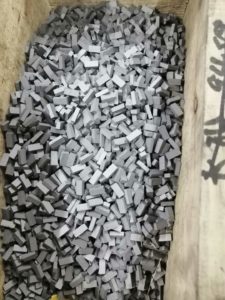

Self-fluxing alloy powder is used for oxygen-acetylene spray welding (spray welding). According to the order of spray welding and remelting, the spray welding process is divided into “one-step method” and “two-step method,” the process of “two-step” spray welding is characterized by two steps of powder injection and remelting, and remelting is carried out by using a remelting gun, the steps are preheating, dusting, and remelting.
The typical defect of oxygen-acetylene surfacing is that the pores are not fused, which is caused by improper operation or poor quality of surfacing material.
Electrode surfacing


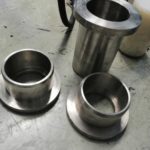
Welding electrode arc welding equipment is cheap, universal, suitable for field surfacing, power commonly used are Arc Welding Transformer, ARC welding rectifier, arc welding generator, and arc welding inverter, etc. It is especially suitable for surfacing irregular welding parts and parts with poor accessibility, arc heat concentration, small deformation, high productivity, but its deep penetration, high dilution, surfacing layer hardness, and wear resistance decline, usually welding 2 ~ 3 layers, multi-layer welding easy to crack. The electrode arc surfacing welding is mainly used for small batch production and repairing worn parts. In China, the surfacing electrodes are: D10 ~ 24; d25 ~ 29; d30 ~ 49; d50 ~ 59; d60 ~ 69; d70 ~ 79; D80 ~ 89 and so on.
The electrode of titanium-calcium type, ilmenite type, and low hydrogen type is best to use DC reverse welding, the wire of graphite type is suitable to use DC direct welding or AC power source. Before surfacing, the electrode should be dried about the temperature specified in the manual of the wire. The acid electrode should be dried at 150 °C for 0.5 ~ 1h and the primary electrode at 250 ~ 350 °C for 1 ~ 2h. The preheating temperature of surfacing welding is mainly determined by carbon equivalent, such as carbon equivalent% is 0.4,0.5,0.6,0.7,0.8, preheating temperature (°c) is 100,150,200,250,300 respectively. The slow cooling after surfacing can carried out in the furnace or asbestos, or it can be adequately heated to cool it slowly.



Submerged ARC surfacing
Submerged ARC surfacing is automatic production, high current, high efficiency, no light radiation, right working conditions, more dilution rate of submerged arc heat, general surfacing 23 layers to ensure the required performance, to avoid cracking take measures such as preheating and slow cooling; It mainly used for surfacing welding in the horizontal position. It is most suitable for large and non-deformable parts, such as an inner wall of large diameter containers.



DC POWER SOURCE OR AC power source can used for submerged arc surfacing. To improve surfacing quality and production efficiency, DC reverse welding mostly used. The effect of the welding arc voltage on the dilution rate is not apparent. In general, the ARC voltage is 30 ~ 35V, and the length of the stretching wire is eight times the diameter of the cable,
the electrode modified by multi-wire and Strip electrode.
Other surfacing methods are mig surfacing, TIG surfacing, plasma arc surfacing, esr surfacing, laser surfacing, friction surfacing.

Leave A Comment